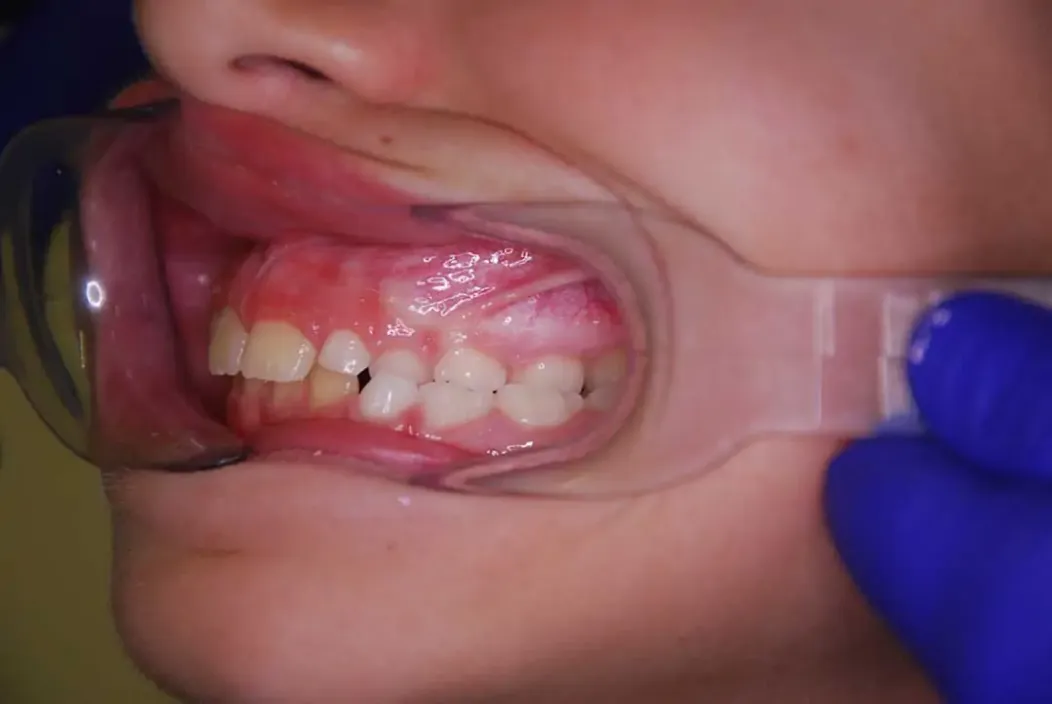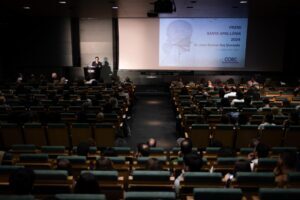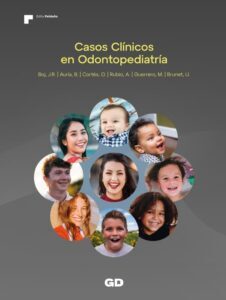What is crossbite in children: causes and treatment
Why do crossbites happen?
Crossbite is a type of malocclusion in which there is an incorrect relationship between the upper and lower jaw. That is, the patient occludes in an inverted way, surpassing the lower teeth in front of the upper ones.
It may be seen in the back teeth (posterior crossbite), in the front teeth (anterior crossbite), or in both (anterior and posterior crossbite).
We can find it when the patient has baby teeth or in mixed dentition (when the kid has some baby teeth together with some permanent teeth) or with only permanent teeth present.
Also, it may affect a single tooth or, more commonly seen, affecting more teeth.
How do crossbites happen?
In a correct occlusion, the teeth of the upper arch bite outside the lower ones. However, in the case of this type of occlusion, the bite is inverted and the teeth of the lower arch are outside the upper ones.
Crossbite types in babies and children
There are different types of crossbite:
Anterior crossbite
On one side, this first one can affect the front top teeth from canine to canine. That means, mandibular incisors are ahead of top front teeth (maxillary incisors).
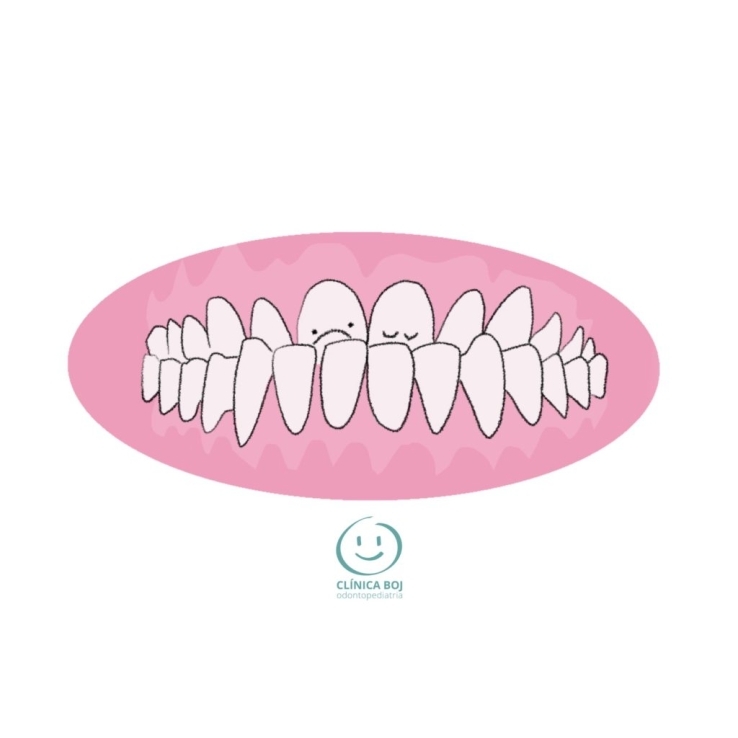
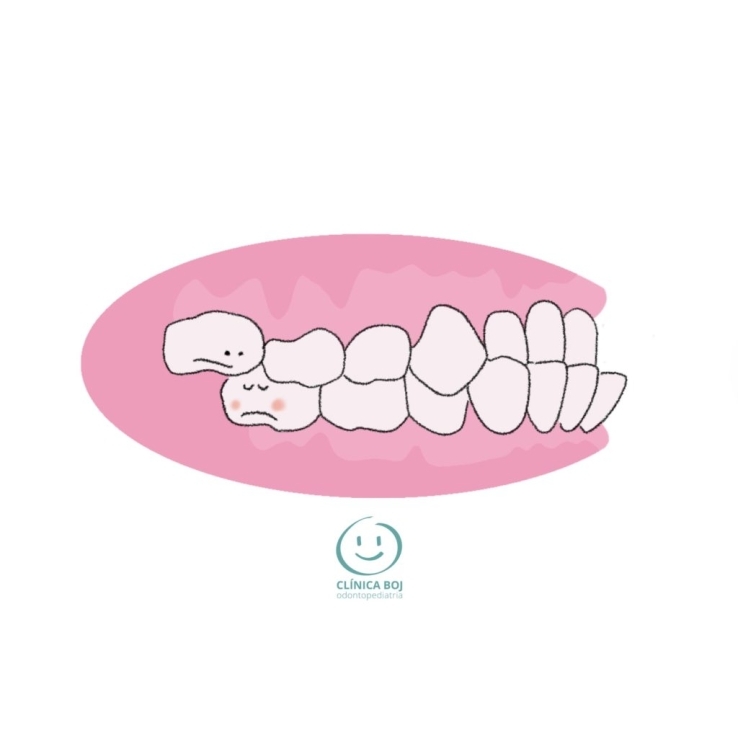
Posterior crossbite (maxillary arch is narrow laterally compared to mandibular arch)
On the other hand, this one affects the premolars and molars. It can be:
Unilateral crossbite
That is, on one side of the dental arch.
Bilateral crossbite,
In which both sides of the dental arch are affected.
If you use a pacifier for a long time or if your baby sucks too hard, he/she may get a posterior crossbite. The bottle can also be used as a pacifier; in those cases the baby may also get a posterior crossbite. Thumb sucking can also affect your baby’s teeth and contribute to developing a posterior crossbite. Depending on what fingers are sucked and the position of the fingers in the mouth, the type of crossbite may vary.
To end, learn more about the importance of taking your baby to the pediatric dentist.
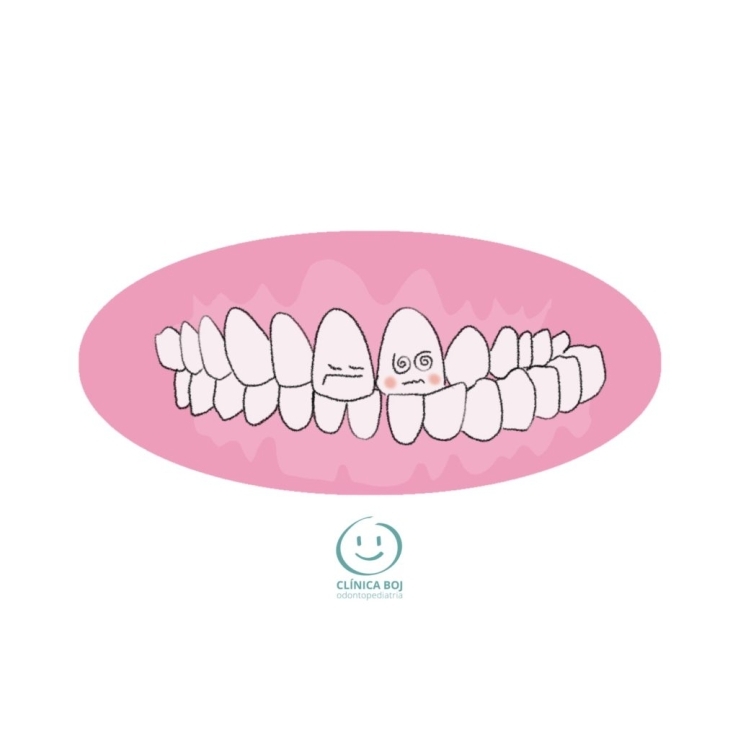
What causes crossbite in toddlers?
Having a crossbite means having a reverse bite and this leads to growth and facial developmental problems. In addition, this type of occlusion can cause dental, muscular, joint (temporo mandibular joint or TMJ) and functional problems.
This can be a problem because it can disrupt the Stomatognatic System, which is responsible for regulating the functions of the body’s major organs. This system is responsible for things like eating, talking, swallowing, pronunciation, chewing, and facial expressions like smiling and breathing.
Premature loss of primary teeth (baby teeth) due to caries, dental trauma or extractions can help to get a crossbite.
Other causes may be some other functional reasons like atypical swallowing, oral breathing, enlarged tonsils and enlarged adenoids. They may block the respiratory pathway and get a deformation of the upper maxillary arch. The upper jaw becomes narrower and the mandible is then larger than the maxilla, getting a crossbite.
When the pediatric dentist diagnoses these problems, he/she gets in touch with the pediatrician and/or the otorhinolaryngolist (ORL doctor). For these case reports, adenoidectomies, tonsil reduction or tonsillectomy may benefit a lot the child. He or she will breath much better and stop the increase of this bad bite. The child may even get certain improvement of the existing crossbite.
Finally, we can find also genetic factors. A hypoplastic upper maxillary jaw or a hyperplastic mandible. In other words, the enlargement of the mandible due to an increase of the reproduction of its bone cells.
Usually, class III maloclussions, where the lower jaw (mandible) has grown more than the maxillary arch, have anterior crossbites and posterior crossbites.
What age should you fix a crossbite?
Examining this malocclusion in childhood/early adolescence is suggested, so that the proper treatment can be administered without the need for more complex surgery. The younger the patient the better treatment results we get.
Please remember, that the palatal suture (in the mid palate separating both halves) closes as early as the patient reaches 11-13 years of age. For some girls it does not close until becoming 13 years and for some boys until reaching 16 years. Once it has closed (welded) you cannot open it without surgery. We recommend treatment between 7 and 9 years of age, and sooner (even with only baby teeth) for more severe cases.
Many times, if this malocclusion is not solved in childhood or adolescence, it can become a major problem that will need surgery when they become young adults, since expansion is not possible at these ages only with orthodontic appliances. They would need the combination of surgery and orthodontic treatment.
How do you fix a crossbite in a child?
Without doubt, reinstituting proper chewing is the aim of therapy. Depending on the age of the child and the type of cross bite, different treatment approaches may be considered. Additionally, depending on the case, expansion plates (removable appliances), quad helix or rapid palatal expanders (fixed appliances) are used.
For this reason, the general treatment is called expansion. Its objective is to increase the transversal dimension of the upper jaw (the maxillary bone), so it can fit correctly the mandible (lower jaw).
Therefore, we have to study the case very carefully to decide if the needed treatment is slower expansion or rapid maxillary expansion.
On one side, with slow maxillary expansion we get dentoalveolar changes. It is used when the problems are mainly dental.
Light forces are applied over a longer period of time. We incline teeth in an outside direction. We have to be careful not to get a thinning of the gum and gum recession (periodontal problems). This type of expansion is usually done with removable orthodontic appliances.
On the other side, the rapid palatal expansion is a very fast way to treat and solve crossbites. Usually in a month the needed dimension of the upper jaw is reached. Nevertheless, retention (not an active treatment, just an appliance left for a longer period of time) has to stay longer so that we do not get relapse.
We open the palatal suture between the left and right halves of the palatal bone. This type of expansion is usually done with fixed orthodontic appliances.
What happens if a crossbite is not corrected?
Without doubt, it is worth fixing a crossbite. If left uncorrected, children may later suffer from facial, dental, muscular or joint issues. Functional growth and development are affected. This way jaw surgery may not be necessary for crossbite cases and skeletal crossbites can be fixed without surgery.
Finally, these issues include worn teeth, asymmetrical jaw growth, worsening of the misalignment, and an unsteady bite. Additionally, it causes facial aesthetic issues.
References:


